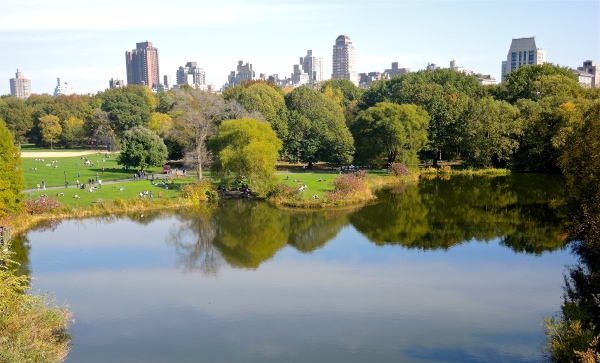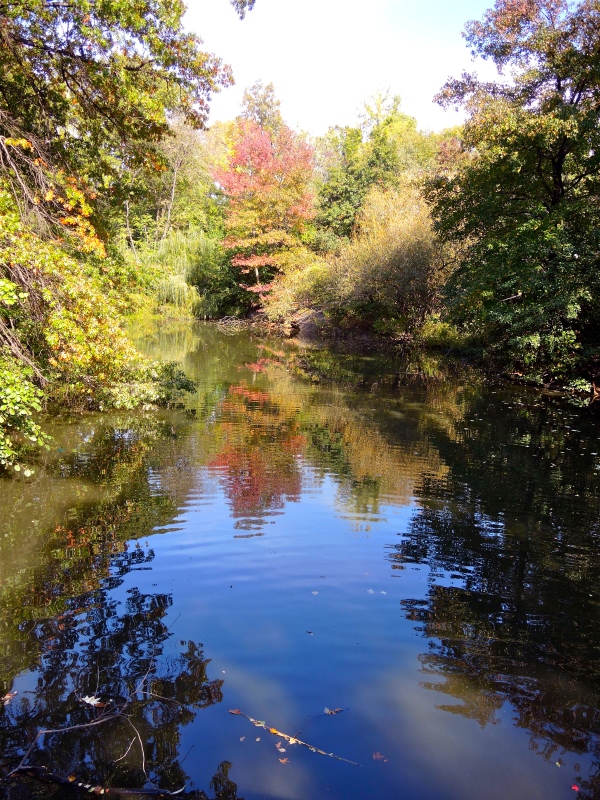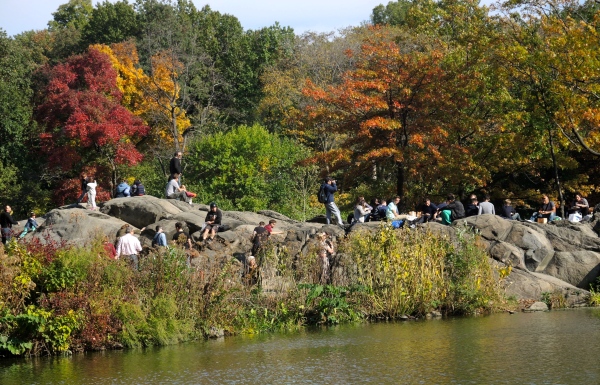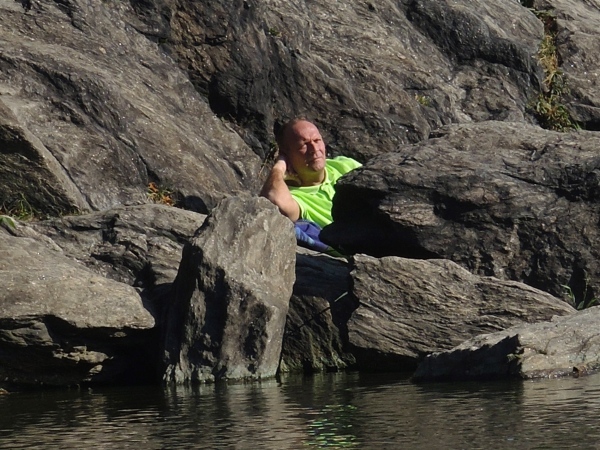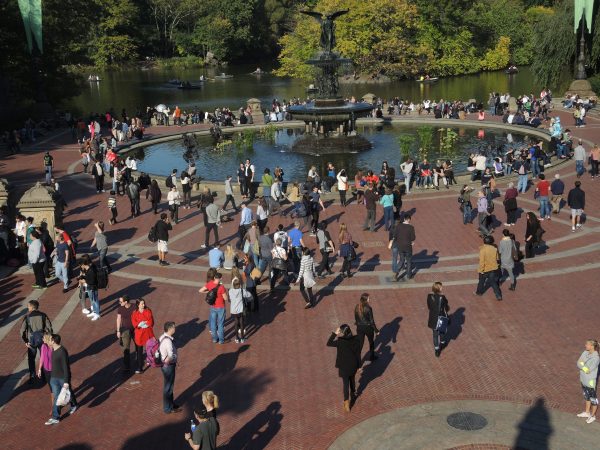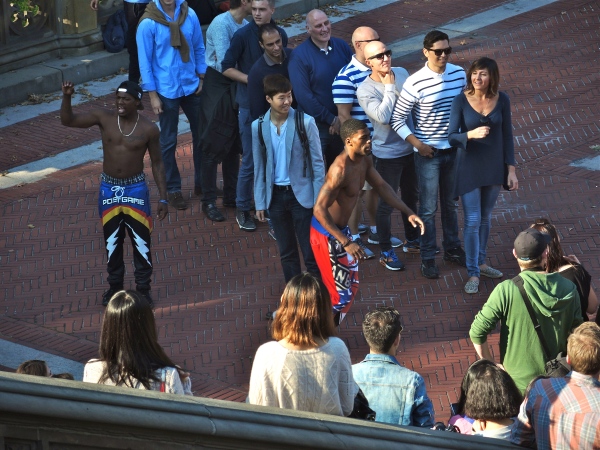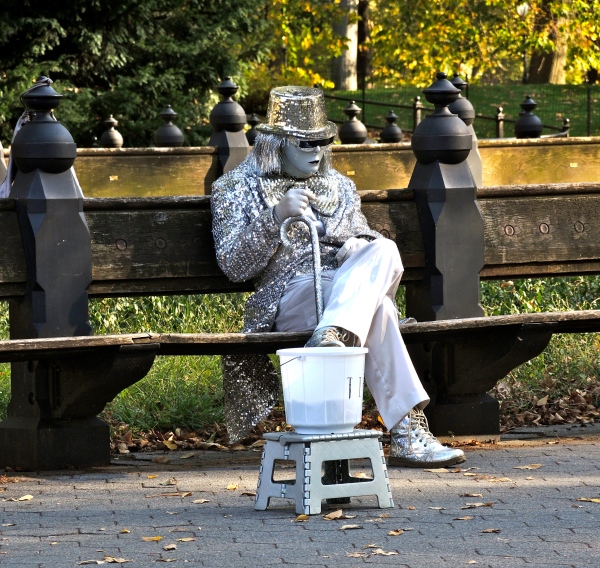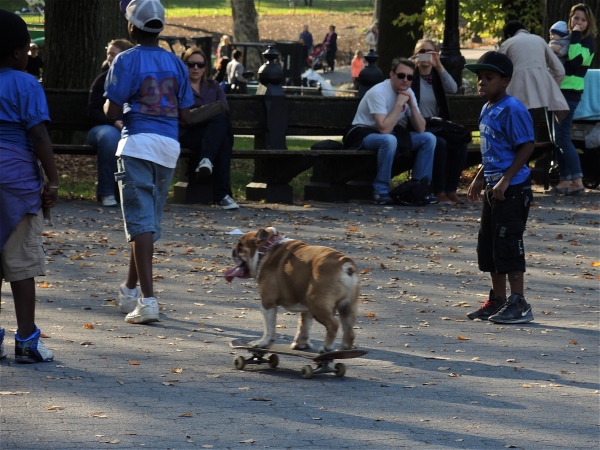CENTRAL PARK – NEW YORK CITY – A VISIT ON OCTOBER 25 2014 IN PICTURES
CENTRAL PARK
CENTRAL PARK
Central Park is a visual masterpiece created by landscape designer Frederick Law Olmsted and architect Calvert Vaux. It has gone through major developments and restoration over time to carry on its initial purpose as an open-air oasis for a metropolitan city.
CENTRAL PARK is an urban park in the central New York Cityborough of Manhattan. It was initially opened in 1857, on 778 acres (315 ha) of city-owned land (it is 843 acres (341 ha) today). In 1858, soon-to-be famed national landscapers and architects,Frederick Law Olmsted (1822–1903) and Calvert Vaux (1824–1895), won a design competition to improve and expand the park with a plan they titled the “Greensward Plan”. Construction began the same year, continued during the American Civil War further south, and was completed in 1873. Central Park is the most visited urban park in the United States.
Designated a National Historic Landmark (listed by the U.S. Department of the Interior and administered by the National Park Service) in 1962, the Park was managed for decades by the New York City Department of Recreation and Parks and is currently managed by the Central Park Conservancy under contract with the municipal government in a public-private partnership. The Conservancy is a non-profit organization that contributes 83.5% of Central Park’s $37.5 million annual budget and employs 80.7% of the Park’s maintenance staff. (Wikipedia)

BETHESDA FOUNTAIN –
Bethesda Fountain is the central feature on the lower level of the terrace, constructed in 1859-64,which is enclosed within two elliptical balustrades.
The pool is centered by a fountain sculpture designed by Emma Stebbins in 1868 and unveiled in 1873.Stebbins was the first woman to receive a public commission for a major work of art in New York. The bronze, eight-foot statue depicts a female winged angel touching down upon the top of the fountain, where water spouts and cascades into an upper basin and into the surrounding pool. It was the only statue in the park called for in the original design. Beneath her are four four-foot cherubs representing Temperance, Purity, Health, and Peace.Also called the Angel of the Waters, the statue refers to the Gospel of John, Chapter 5 where there is a description of an angel blessing the Pool of Bethesda, giving it healing powers. In Central Park the referent is the Croton Aqueduct opened in 1842, providing the city for the first time with a dependable supply of pure water: thus the angel carries a lily in one hand, representing purity, and with the other hand she blesses the water below.
The base of the fountain was designed by the architect of all the original built features of Central Park, Calvert Vaux, with sculptural details, as usual, by Jacob Wrey Mould. In Calvert Vaux and Frederick Law Olmsted’s 1858 Greensward Plan, the terrace at the end of the Mall overlooking the naturalistic landscape of the Lake was simply called The Water Terrace, but after the unveiling of the angel, its name was changed to Bethesda Terrace.
PHOTOS:
LEONARD EPSTEIN
